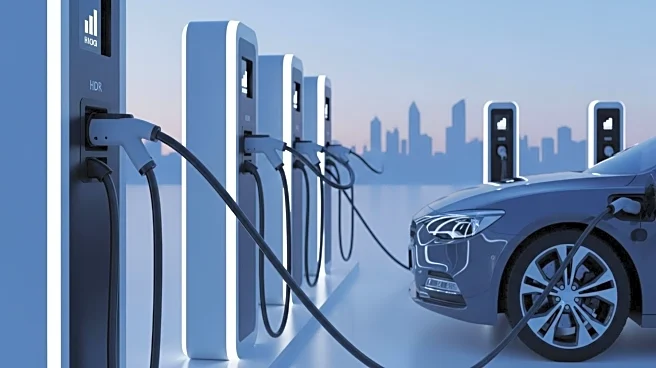What is the story about?
What's Happening?
Cologne-Bonn Airport in Germany has initiated a pilot project to enhance its renewable energy capabilities by installing photovoltaic solar panels on the chimney of its co-generation plant. The installation comprises 80 adhesive solar panels, covering a collector area of approximately 70 square meters. These panels are designed to generate up to 4,400 kWh annually, equivalent to the energy consumption of a typical household. Developed by Heliatek, the panels utilize a rear adhesive, eliminating the need for a substructure, and are positioned south-facing on the chimney's domed surface. The panels have an efficiency range of 7.2% to 8.0% and a power output between 50 W and 55 W, contributing to a total system output of about 4 kW.
Why It's Important?
This innovative approach to solar energy generation represents a significant step in expanding renewable energy infrastructure at airports, which are traditionally high energy consumers. By utilizing existing structures like chimneys, the airport can increase its photovoltaic capacity without requiring additional land or structural modifications. This project not only supports the airport's sustainability goals but also serves as a model for other airports and facilities looking to integrate renewable energy solutions in space-constrained environments. The initiative aligns with broader efforts to reduce carbon emissions and promote energy efficiency in the aviation industry.
What's Next?
Cologne-Bonn Airport plans to further develop its renewable energy capabilities by integrating emission-free heating and cooling systems using ice banks, photovoltaic systems, and heat pumps. Additionally, the airport is investing in an electrical substation and constructing a wood-pellet power plant. These developments are part of a comprehensive strategy to enhance energy efficiency and sustainability at the airport, potentially influencing similar projects at other airports globally.
Beyond the Headlines
The use of adhesive solar panels on unconventional surfaces like chimneys highlights the potential for flexible solar technology to be applied in diverse settings. This could lead to broader adoption of solar energy in urban environments where traditional solar installations are not feasible. The project also underscores the importance of innovation in achieving environmental goals, offering insights into how existing infrastructure can be leveraged to support renewable energy initiatives.
AI Generated Content
Do you find this article useful?













